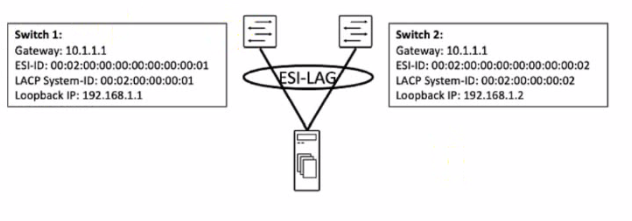Most Recent Juniper JN0-480 Exam Dumps
Prepare for the Juniper Data Center, Specialist exam with our extensive collection of questions and answers. These practice Q&A are updated according to the latest syllabus, providing you with the tools needed to review and test your knowledge.
QA4Exam focus on the latest syllabus and exam objectives, our practice Q&A are designed to help you identify key topics and solidify your understanding. By focusing on the core curriculum, These Questions & Answers helps you cover all the essential topics, ensuring you're well-prepared for every section of the exam. Each question comes with a detailed explanation, offering valuable insights and helping you to learn from your mistakes. Whether you're looking to assess your progress or dive deeper into complex topics, our updated Q&A will provide the support you need to confidently approach the Juniper JN0-480 exam and achieve success.
The questions for JN0-480 were last updated on May 4, 2025.
- Viewing page 1 out of 13 pages.
- Viewing questions 1-5 out of 65 questions
When working with logical devices, you specify where each port group is connected.
In this scenario, which two Juniper Apstra Ul options are available to the operator? {Choose two.)
You have designed your fabric in Juniper Apstra prior to deploying the network devices.
Which Apstra element in the Staged tab would be used to assist the team that is installing and cabling the devices?
Exhibit.

You are working to build an ESI-LAG for a multihomed server. The ESI-LAG is not coming up as multihomed.
Referring to the exhibit, what are two solutions to this problem? (Choose two.)
The LACP system ID on both devices must be the same. This ensures that the LACP protocol can negotiate the LAG parameters and form a single logical interface for the server.
The ESI ID on both devices must be the same. This ensures that the EVPN control plane can advertise the ESI-LAG as a single Ethernet segment and synchronize the MAC and IP addresses of the server across the devices.
The VLAN ID and VNI on both devices must be the same. This ensures that the server can communicate with other hosts in the same virtual network and that the VXLAN encapsulation and decapsulation can work properly.
You want to make a widget appear on the main dashboard in Juniper Apstr
a. In this scenario, which statement is correct?
You use Juniper Apstra to enable a new VXLAN virtual network.
Which two components would be automatically derived in this situation? (Choose two.)
Unlock All Questions for Juniper JN0-480 Exam
Full Exam Access, Actual Exam Questions, Validated Answers, Anytime Anywhere, No Download Limits, No Practice Limits
Get All 65 Questions & Answers